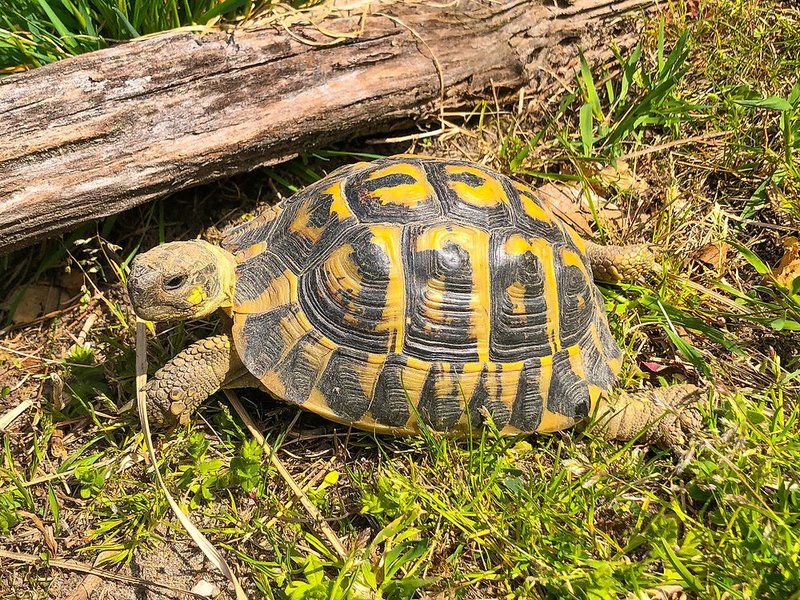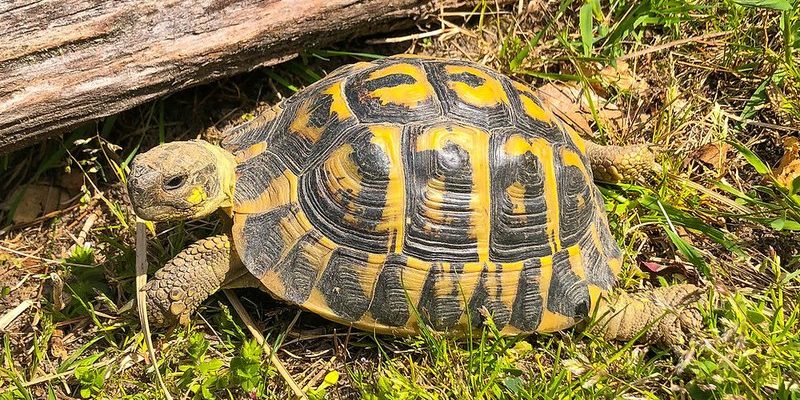
In this article, we’ll dive deep into the world of Hermann’s tortoises and explore their living conditions. It’s essential to understand what these little guys need to live a healthy and happy life. Think of it as setting up a new home. You wouldn’t just throw everything together without thinking about the layout, right? We’re here to ensure your tortoise gets the best setup, whether it’s indoors or outdoors.
Understanding the Hermann’s Tortoise
The Hermann’s tortoise is a small to medium-sized tortoise native to Europe, particularly found in areas like Greece and Italy. These tortoises can have a shell length of about 5 to 12 inches, and they can live for several decades—some even reaching up to 100 years! Isn’t that incredible? They have a rounded, domed shell, which is usually decorated with beautiful yellow and black patterns.
These tortoises are primarily herbivores, meaning their diet is mainly composed of leafy greens, flowers, and some fruits. Giving them a balanced diet is crucial for their health. You might be thinking, “So what’s the best way to care for them?” That’s where understanding their living conditions comes in.
Indoor Living Conditions
Let’s start with indoor living. Keeping a Hermann’s tortoise indoors can be a great option, especially if outdoor conditions aren’t ideal, or you live in a colder climate. However, there are some vital points to keep in mind.
Space and Setup
First off, you’ll need enough space. A tortoise requires a minimum of 4 square feet of space, though more is always better. A large tortoise tank or an enclosed area in your home can work well. It’s kind of like setting up a cozy apartment for them. Add things like a heat lamp for basking, a shallow water dish for drinking and soaking, and some hiding spots using rocks or logs. They love to explore!
Lighting and Temperature
One of the most crucial elements is providing proper lighting. Hermann’s tortoises need access to UVB lighting for about 10-12 hours a day to help them synthesize vitamin D3. Without it, they won’t be able to absorb calcium effectively, leading to health issues. That’s like trying to paint in the dark—no good!
Humidity and Substrate
Humidity levels are also essential. A slightly damp substrate like coconut coir or a mix of topsoil works well. It helps maintain humidity and gives your tortoise a comfortable environment to burrow in. Just make sure it’s not too wet—imagine walking in a swamp; not ideal!
Common Indoor Mistakes
It’s easy to make mistakes when caring for a tortoise indoors. Here are a few common ones to avoid:
- Too small enclosure: A cramped space can lead to stress and health issues.
- Lack of proper lighting: Skipping UVB lighting can be detrimental to their health.
- Not enough variety in their diet: Sticking to just one type of green can lead to nutritional deficiencies.
Outdoor Living Conditions
Now, let’s talk about the outdoors. Hermann’s tortoises can thrive outside, given the right conditions. If you have a suitable yard, they can enjoy sunshine and fresh air, which is always a bonus!
Enclosure Setup
Creating a secure outdoor enclosure is vital. You want to ensure it’s escape-proof—these little guys can burrow! A fenced area at least 2 feet high is recommended, topped with a barrier to prevent them from climbing over. Think of it as a mini fortress for your tortoise.
Sunlight Exposure
Hermann’s tortoises bask in the sun, which helps them regulate their body temperature and absorb the necessary UVB rays. They should have access to a sunny spot during the day, but also shaded areas to cool off when they need it. It’s all about balance, just like managing your time between work and relaxation.
Safety Measures
Before letting your tortoise roam free outside, check for potential dangers. Make sure there are no harmful chemicals in the yard, avoid using pesticides, and ensure that there are no holes or gaps in the fencing. Just like childproofing a home, it’s all about ensuring a safe space.
Seasonal Considerations
In many regions, winter brings challenges for outdoor tortoise living. Here’s what to keep in mind:
- Temperature: If it gets too cold, your tortoise may need to come indoors.
- Hibernation: Some Hermann’s tortoises hibernate during the winter months. Understanding this process is crucial.
- Predators: Outdoor tortoises might be at risk from predators like birds or dogs. Always keep an eye on their surroundings.
Indoors vs. Outdoors: Pros and Cons
Now that we’ve covered both sides, let’s break down the pros and cons of keeping a Hermann’s tortoise indoors versus outdoors.
Indoor Living Pros
– Controlled Environment: You can manage temperature and humidity easily.
– Protection from Predators: Your tortoise is safe from external threats.
– Year-Round Care: No need to worry about seasonal changes affecting conditions.
Indoor Living Cons
– Space Limitations: Depending on your home, space might be an issue.
– Need for Proper Lighting: You’ll need to invest in UVB lighting.
– Potentially Less Natural Behavior: They might miss the chance to roam freely.
Outdoor Living Pros
– Natural Sunlight: Direct sunlight is beneficial for their health.
– Space to Roam: They can engage in natural behaviors like digging and basking.
– Fresh Air: An outdoor setting can be more stimulating for your tortoise.
Outdoor Living Cons
– Weather-Dependent: Extreme temperatures can pose risks.
– Risk of Predators: Outdoor tortoises may face threats from animals.
– Seasonal Adjustments: You’ll have to ensure proper care during hibernation.
Final Thoughts on Housing Your Hermann’s Tortoise
So, can the Hermann’s tortoise live indoors or outdoors? The answer is a resounding yes to both, but it depends on your specific situation and what you can provide. Each option has its benefits and drawbacks, so it’s essential to weigh your circumstances carefully.
Ultimately, the goal is to create a safe, stimulating environment where your tortoise can thrive. Whether you choose indoors or outdoors, just remember to keep their needs front and center. After all, you’re not only providing a home but also a sanctuary for your new friend.
By understanding their requirements and making informed choices, you’re setting up a happy home for your Hermann’s tortoise, creating memories that can last a lifetime. Enjoy your tortoise journey!

